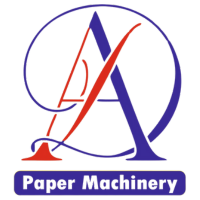Introduction
In the realm of hygiene products, toilet rolls stand out as indispensable household items. The demand for high-quality toilet rolls has surged, driving innovation in their production. At the core of this evolution are toilet roll making machines, which have transformed the manufacturing process. This blog delves into the technology, benefits, and future of toilet roll making machines, showcasing their impact on the industry and consumers.
The Evolution of Toilet Roll Manufacturing
Toilet paper has been in use since the 6th century AD in China, but it wasn’t until the late 19th century that mass production began. Initially, the production process was manual and labor-intensive, involving simple tools and techniques. The invention of toilet roll making machines marked a significant milestone, enabling large-scale production and meeting growing global demand.
Modern Toilet Roll Making Machines
Today’s toilet roll making machines are sophisticated and efficient, designed to produce high-quality rolls with minimal waste. Key features include:
- Automation and Precision: Modern machines are highly automated, with computerized systems controlling each step of the process, from raw material feeding to final packaging. This ensures precision and consistency in every roll.
- High-Speed Production: Capable of producing hundreds of rolls per minute, these machines significantly enhance productivity. This high-speed capability is essential to meet the ever-increasing demand for toilet paper.
- Versatility: Toilet roll making machines can produce various types of rolls, including different sizes, ply counts, and embossing patterns. This versatility allows manufacturers to cater to diverse market needs.
- Sustainability: With a focus on environmental responsibility, many machines now incorporate eco-friendly technologies. These include energy-efficient motors, water recycling systems, and the use of sustainable raw materials.
Benefits of Modern Toilet Roll Making Machines
The advancements in toilet roll making machines offer numerous benefits to manufacturers and consumers alike:
- Cost Efficiency: Automation reduces labor costs and increases production efficiency, resulting in cost savings that can be passed on to consumers.
- Quality Control: Advanced machines ensure uniform quality, with consistent softness, strength, and absorbency in every roll.
- Customization: Manufacturers can produce customized rolls to meet specific customer preferences, enhancing product appeal and marketability.
- Environmental Impact: Sustainable technologies reduce the environmental footprint of production, aligning with global sustainability goals and consumer expectations.
The Manufacturing Process
The production of toilet rolls involves several key steps, all of which are streamlined by modern machines:
- Pulp Preparation: Raw materials, typically wood pulp or recycled paper, are processed into a pulp. This pulp is then bleached and treated to achieve the desired softness and strength.
- Rolling and Cutting: The pulp is rolled into long sheets, which are then cut into individual rolls. The machine precisely controls the size and thickness of each roll.
- Embossing and Perforation: Embossing patterns are applied to enhance the texture and strength of the paper. Perforation lines are added to facilitate easy tearing.
- Packaging: The finished rolls are packaged for distribution. Modern machines can automatically wrap and pack rolls, ensuring they are ready for the market.
 Total Users : 23638
Total Users : 23638